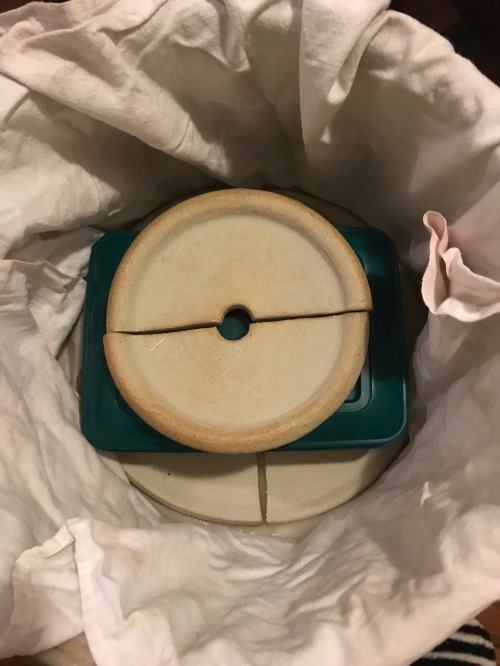A few weeks ago, I went to the Jean Talon Market in Montreal – normally a big market full of local produce, but more than doubled in size towards the end of harvest season. Among the treasures were cabbages, each much bigger than my head. What a great excuse to use the sauerkraut weights that Tosten’s Pots had made for me last year! I have made sauerkraut before, and wrote about it Here and Here and Here among other places. I like sauerkraut a lot!
This time I used a relatively modern recipe for brined sauerkraut, from Stocking Up, a book from 1977. The recipe is very traditional, made with brine and cabbage in a big crock.
Mix your finely shredded cabbage with salt (3 Tbsp plus 2 tsp of pickling salt for each 10 quarts of cabbage). Pack the cabbage firmly, but not tightly into the crock, pressing own with a wooden spoon or paddle. Lay a clean cloth over the cabbage, then put on the sauerkraut weights. My weights were not heavy enough to ensure that the liquid woul reach the botto of the cover, so I added a container fille with water and two more weights. I allowed the cabbage to ferment at room temperature for about 9 days, changing the cloth each day and checking for scum to scrape off. Fermentation has ended when bubbles stop rising to the surface. It tasted good, so last night put it into jars and processed for 20 minutes, with a little leftover to eat fresh.


